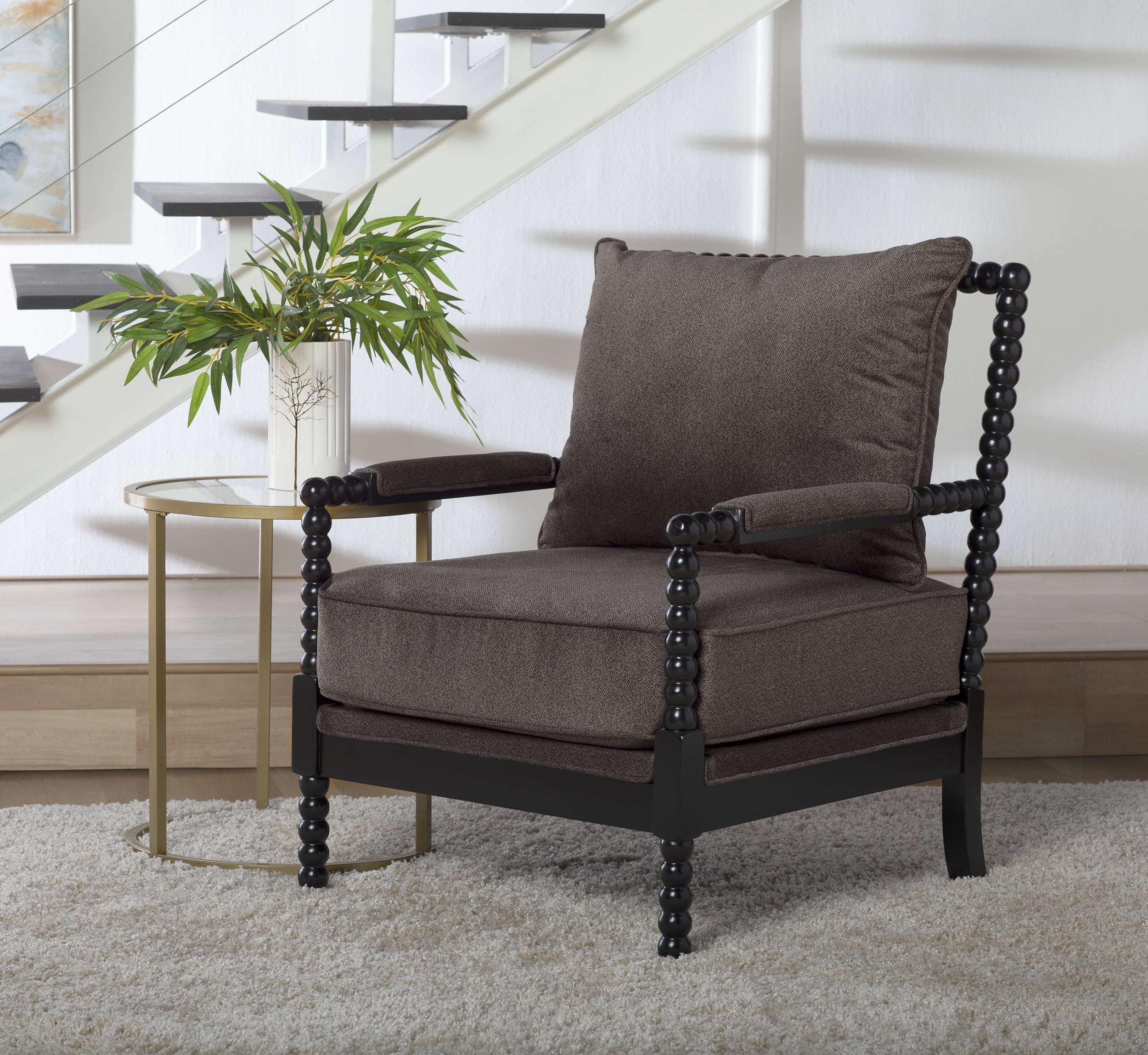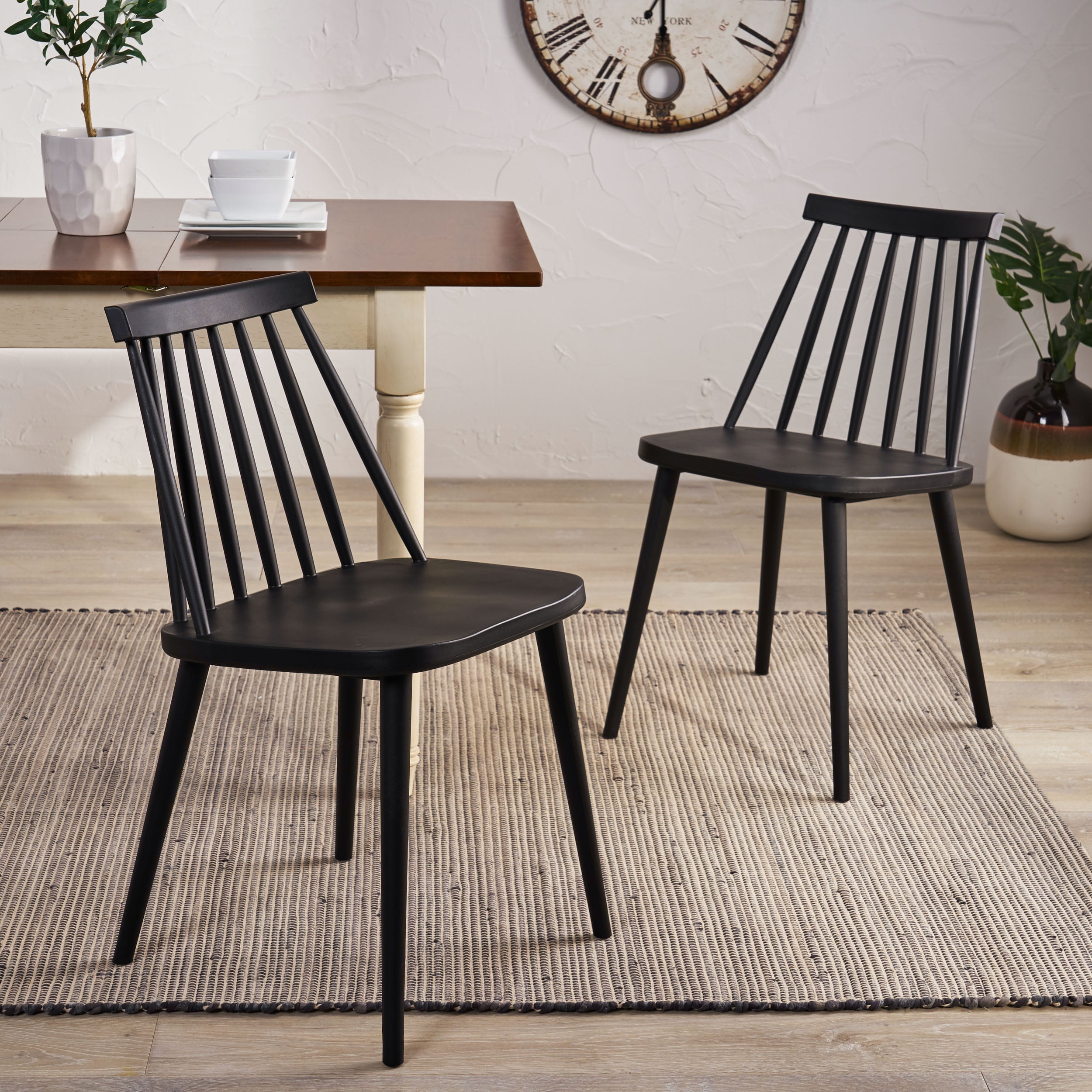Design & Aesthetics of Black Spindle Arm Chairs

Black spindle arm chairs offer a captivating blend of classic elegance and modern versatility. Their enduring appeal stems from a harmonious interplay of design elements, historical context, and the powerful visual impact of the color black. This exploration delves into the diverse styles, material choices, and atmospheric effects achieved through this iconic furniture piece.
Design Styles and Historical Influences
Black spindle arm chairs have graced interiors across various historical periods and design movements. The Victorian era, for instance, saw the rise of elaborately carved, dark-stained wood spindle chairs, often featuring intricate patterns and plush upholstery. These pieces conveyed opulence and a sense of refined taste. In contrast, mid-century modern designs embraced simpler lines and cleaner spindle arrangements, reflecting a preference for functionality and minimalist aesthetics. Contemporary interpretations often incorporate black metal spindles, creating a sleek and industrial look, or blend traditional spindle designs with unexpected materials like rattan or plastic for a unique fusion of styles. The versatility of the spindle chair allows it to seamlessly integrate into various design schemes, from traditional to contemporary.
Visual Impact of Spindle Patterns
The visual impact of a black spindle chair is significantly influenced by the spindle pattern. Tightly spaced, thin spindles create a delicate and almost lacy appearance, lending a sense of refinement and intricacy to the chair. Conversely, loosely spaced, thicker spindles project a more robust and substantial presence, adding a touch of rustic charm or even a slightly bolder, more modern feel depending on the overall design. The choice of spindle pattern significantly affects the chair’s perceived weight and scale within a room. A chair with fine spindles might appear lighter and more airy, while one with thick spindles might anchor a space and create a stronger visual focal point.
The Influence of Color and Material
The color black plays a crucial role in shaping the overall aesthetic of a spindle arm chair. Black’s inherent neutrality allows it to act as a versatile backdrop, complementing various interior styles and color palettes. When used on wood, black creates a sense of sophistication and formality, while on metal, it projects a more industrial or contemporary feel. The choice of material further influences the chair’s aesthetic. A black lacquered wood chair exudes a classic elegance, while a black metal chair offers a stark contrast and a more modern, sometimes even edgy appeal. The texture of the material also contributes – a smooth, polished black finish differs significantly from a rough, matte black, influencing the chair’s perceived weight and formality.
Mood Board: Black Spindle Arm Chairs in Different Settings
Imagine a Victorian-style library, dimly lit with a crackling fireplace, where a black spindle armchair with plush velvet upholstery sits beside a mahogany desk. The atmosphere is one of quiet contemplation and old-world charm. In a stark contrast, envision a minimalist loft apartment with exposed brick walls and industrial lighting, featuring a black metal spindle chair with a simple, unadorned design. This setting conveys a sense of modern sophistication and urban cool. Alternatively, picture a cozy farmhouse kitchen with whitewashed walls and wooden beams, where a black spindle chair with a slightly distressed finish adds a touch of rustic elegance. The atmosphere is warm, inviting, and comfortably lived-in. Each setting highlights the adaptability of the black spindle chair, demonstrating its ability to seamlessly integrate into diverse interior styles while contributing unique atmospheric qualities.
Manufacturing & Materials of Black Spindle Arm Chairs

The beauty of a black spindle arm chair lies not only in its design but also in the quality of its construction and the materials used. The choice of materials significantly impacts the chair’s durability, aesthetic appeal, and ultimately, its price. Understanding these factors is crucial for both manufacturers and consumers.
Wood Types and Manufacturing Processes
Black spindle arm chairs are frequently crafted from various hardwoods, each possessing unique properties influencing the final product. Common choices include oak, mahogany, walnut, and cherry. The manufacturing process typically involves selecting seasoned lumber, cutting it to precise dimensions, shaping the spindles and chair legs using techniques like lathe turning, and assembling the pieces using joinery methods such as mortise and tenon or dowel joints. Finishing involves sanding, staining (often to achieve the black finish), and applying a protective sealant. The entire process requires skilled craftsmanship and specialized tools.
Metal Finishes and Manufacturing Processes
While less common, black spindle arm chairs can also incorporate metal elements, particularly in the frame or legs. Metals like wrought iron or steel are popular choices, often powder-coated for a durable black finish. Manufacturing involves shaping the metal using techniques like forging or welding, followed by the powder-coating process, which involves applying a layer of powdered paint and then curing it in an oven. This results in a scratch-resistant and weather-resistant finish, ideal for outdoor or high-traffic areas.
Durability and Maintenance
The durability and maintenance requirements vary significantly depending on the materials used. Wooden chairs require regular dusting and occasional polishing to maintain their finish. Spills should be cleaned immediately to prevent staining. Wood can be prone to scratches and dents, so careful handling is recommended. Periodic refinishing might be necessary to address wear and tear. Metal chairs, particularly those with powder-coated finishes, are generally more durable and require less maintenance. Regular cleaning with a damp cloth is usually sufficient. However, chips or scratches in the powder coat can expose the underlying metal to rust, necessitating touch-up paint or repair.
Cost Differences Based on Materials and Techniques
The cost of a black spindle arm chair is heavily influenced by the materials and manufacturing techniques employed. Solid wood chairs, especially those made from high-quality hardwoods and featuring intricate joinery, are generally the most expensive. The cost increases with the complexity of the design and the level of craftsmanship involved. Metal chairs tend to be less expensive than their solid wood counterparts, particularly if mass-produced. However, high-quality metal chairs with intricate designs can also command a premium price. The cost of finishing also plays a role, with hand-rubbed finishes generally being more expensive than sprayed finishes.
Refinishing a Wooden Black Spindle Arm Chair: A Step-by-Step Guide
Refinishing a wooden black spindle arm chair can restore its beauty and extend its lifespan. The process involves stripping the old finish, sanding, staining, and sealing.
| Step Number | Action | Tools Required | Notes |
|---|---|---|---|
| 1 | Remove existing finish using chemical stripper | Chemical stripper, scraper, safety gloves, eye protection, rags | Follow manufacturer’s instructions carefully; work in a well-ventilated area. |
| 2 | Sand the wood smooth using progressively finer grit sandpaper | Sandpaper (various grits), sanding block, tack cloth | Start with coarser grit and gradually move to finer grit to achieve a smooth surface. |
| 3 | Apply wood stain | Wood stain, brushes, rags | Apply stain evenly following manufacturer’s instructions; allow sufficient drying time. |
| 4 | Apply a protective sealant (polyurethane or varnish) | Sealant, brushes or spray equipment, rags | Apply multiple thin coats, allowing each coat to dry completely before applying the next. |
